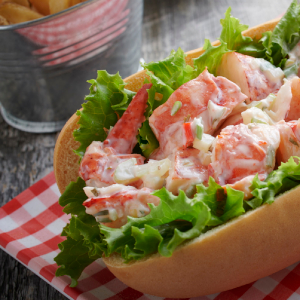Dear American readers! You may think you know your massive neighbour to the north, but I’ll bet you don’t know about some of our signature foods! For everyone who’s never been to Canada, We’re going to present a smorgasbord of truly Canadian dishes – some of which will surprise you!
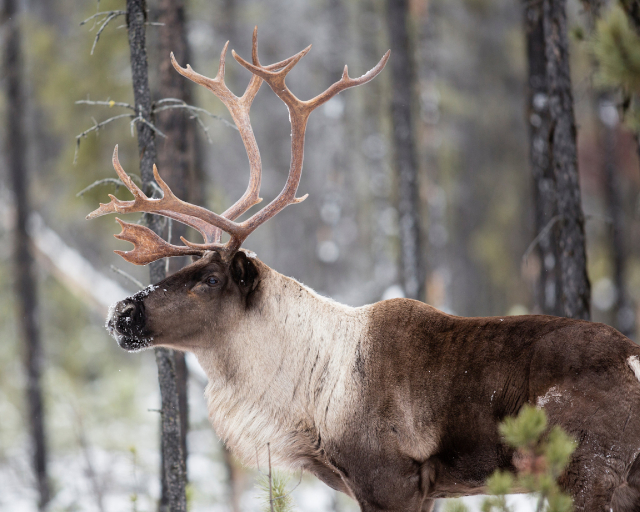 Caribou: Better known to Americans as ‘Elk’. They’re farmed in
Caribou: Better known to Americans as ‘Elk’. They’re farmed in
northwestern Canada, along with Bison, for meat.
Also on the back of the Canadian quarter.
The Great White North. Land of Bob and Doug MacKenzie (“We’re not worthy!”). Land of Poutine (in spite of some Americans’ claims that the iconic mess was invented in Vermont). Land of Nova Scotia lobsters – the most coveted in the world (in spite of some Americans’ claims that Maine Lobsters are the tops). Land of the free, and home of the ‘Eh!’.
So you think you know Canada? Think Canada is pretty much the same as the U.S., right down to our food? I’m going to instill shock and awe in you today!
The real Canada
The real Canada starts in the east with a massive fishing and seafood industry in the Maritimes. There’s major mining and forestry in Quebec. Ontario is home to the nation’s capital – Ottawa, not Toronto (‘The Big Smoke’ is Canada’s financial capital, though). Ontario farmers produce a lot of produce and there’;s a world-class wine culture in the Niagara Peninsula. The prairies are virtually carpeted with grain, mainly wheat, but also barley, oats, and canola. The province of Saskatchewan is the world’s largest producer and exporter of Mustard Seed. Alberta is where the mountains start and beef ranching is king. British Columbia encompasses Canada’s west coast, and again there’s a healthy fishing and seafood industry. Think ‘Salmon’.
Now… Factor in the British and American influences, and those of all the waves of immigration we’ve experienced, and add the contributions of the earliest settlers and our indigenous peoples, and you get a tremendously rich and colourful national cookbook!
On our menu today
We’ll look first at Canada’s signature mains and sides. If you just take a week’s menu of most Canadian families – especially urban dwellers – you might not find much of interest. But we’re going to focus on regional and traditional specialties that are uniquely Canadian! We’ll start in the east and trek west…
Seal Flipper Pie: What it says. A Newfoundland specialty. Invented in 1555, during the first Newfoundland seal hunt. Harp Seal flipper meat is cooked low and slow with carrots, onions and celery until a thick sauce forms.
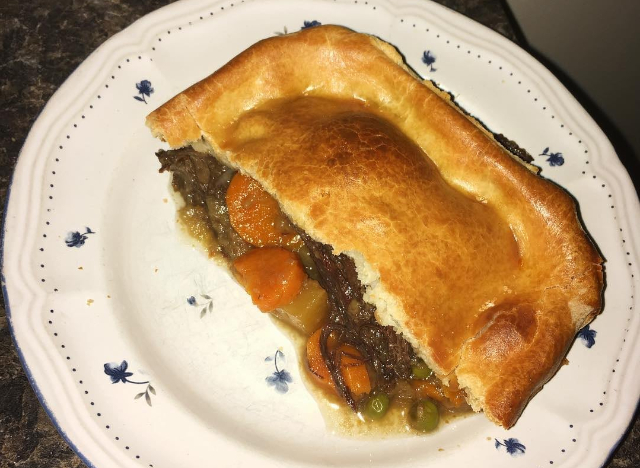
Then the mixture is stuffed into either a conventional two-piece pie crust or a single-serving turnover. It’s become a traditional Lenten and Easter specialty.
Nova Scotia Lobster Roll: The original (see photo, top of page), ripoffs of which are now offered at restaurants round the globe. You start with a Hot Dog Roll, and pile in the filling. The filling is composed of chunked cooked lobster meat (preferably claws and tails), lots of mayo, small-diced celery, good pinches of salt and pepper, and a Romaine lettuce leaf (to line the bun). Simple, elegant and a flavour all its own. Other folks (primarily New Englanders) add other stuff, but that just muddies the taste and messes up the tradition.
Poutine: Pronounced ‘pou-TIN’; not to be confused with the Russian leader. It’s now world-famous, but the original hot mess of fries covered in gravy and topped with nubbins of Cheese Curd was invented one otherwise unremarkable day in Quebec’s Eastern Townships.

A diner customer was ordering his usual plate of fries and gravy, and noticed a display of little bags of fresh cheese curds from a local Cheese factory. “Put some of those on top?” he asked the proprietor. “Okay,” the diner guy replied. “But that’s going to make a real mess!” ‘Nasty mess’ is ‘mauvaise poutine’ in French. Now you know.
Montreal Smoked Meat: Not Pastrami, not Corned Beef. Something related to them but distinctly Canadian. What makes ot different? Wikipedia says: “Montreal smoked meat is made with variable-fat brisket, whereas pastrami is more commonly made with the fat-marbled navel/plate cut. … While some Montreal smoked meat is brine-cured like corned beef, with spices applied later, many smoked meat establishments prefer dry-curing directly with salt and spices.” It’s usually eaten hot and juicy, fresh from the steamer, on thick-sliced Rye bread with Half-Sour Dill Pickles on the side.
Tourtière: Ground Meat Pie with Onions. A French Canadian tradition for Christmas Eve. It’s also enjoyed across New England, but it’s an all-Canadian creation! Pork is the most traditional meat used, but you can also employ game, veal or even beef (if you must).
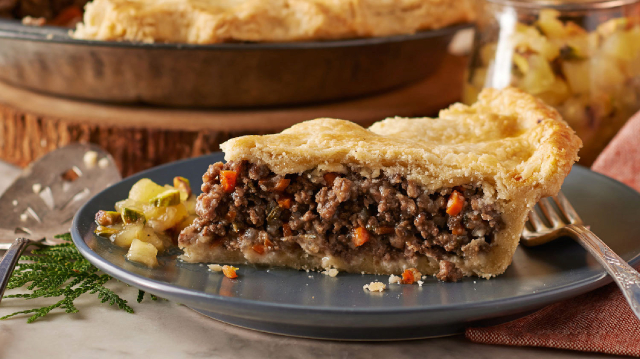
The other cardinal ingredients are lots of medium-diced onions and mashed potatoes as a binder. The distinctive character of the dish comes from cinnamon, cloves and a generous dose of Nutmeg. In New England they generally use a store-bought Poultry Seasoning blend. But it’s just not the same.
Split Pea Soup: A classic made with dried split peas – either green or yellow – simmered low and slow until they break down and form a really thick, creamy soup. Ham or bacon chunks are a mandatory addition.
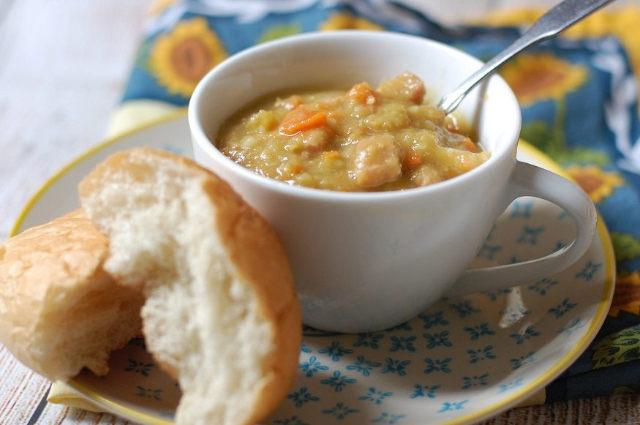
The flavouiring comes from salt, pepper, thyme, and garlic. Fine-diced carrots, celery and onions are sautéed until soft, and chicken stick is added to thin the pea starch to a luxurious, velvety consistency. A hearty, filling meal in itself.
Peameal Bacon: Also known as Canadian Bacon or Back Bacon in the U.S. Invented in Toronto in the late 1890s, this unparalleled protein was originally made by wet-curing a whole pork loin in a simple salt-and-sugar brine, and rolling it in peameal. Except that, now-a-days, corn meal is usually used. The bacon is sliced fairly thick, and fried or baked in the oven. It’s the king of breakfast meats in Canada.
Game Meats: Bison (Buffalo) and Caribou (A.K.A., ‘Elk’) are farmed in parts of Canada’s northwest. You can get them, albeit in limited quantities, all across the country, usually on the menus of fancy, chef-driven restaurants.
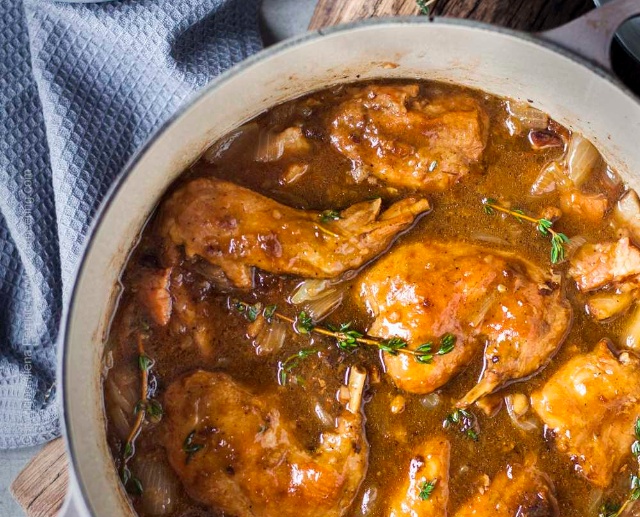
Rabbit (above; stewed) is generally available in better supermarkets and it extremely popular among folks of European ancestry. Geese are almost as easy to get as chickens, if you prefer one of those for a festive dinner (in the ancient English tradition).
Fish: Pacific and Atlantic Salmon are very different fish although they are close cousins, genetically. Arctic Char is also a member of their family as is the Steelhead Trout. Speaking of which, Trout, Pickerel, Black Bass, Pike and a number of other ‘good eating’ fish are common in the country’s freshwater lakes and rivers. Perch are harvested by a thriving fishery on Lake Erie, second from the East of the Great Lakes. The Pacific fishery is also famous for Yellowfin Tuna.
Seafood: Along with the aforementioned Nova Scotia lobster, the Atlantic fishery also produces a lot of shrimp, scallops, clams, mussels and oysters.
Canada is truly a cornucopia!
I guarantee you: Once you’ve tried eating Canadian style, you’ll never go back to whatever you’re eating now!
Tomorrow, we’ll look at Canadian breads – the ones that don’t often show up in the supermarket or the corner bakery…
~ Maggie J.

